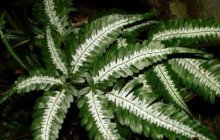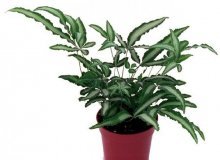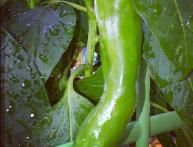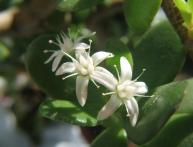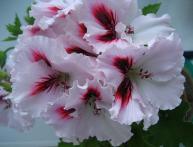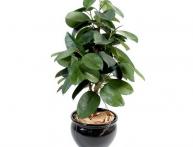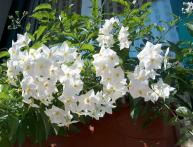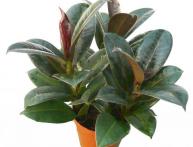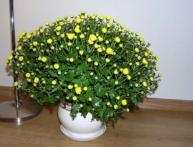Exotic fern pteris

Pteris is a fern from the Pteris family that has beautiful leaves of various sizes and shapes, they can be green or variegated. Some species of this plant can be grown and propagated even at home; pteris blooms especially well with proper care and high humidity.
Content:
Features and distribution
Pteris originates from the Mediterranean, China and Japan. Such plants are huge and unpretentious ferns to grow. Pteris is the most numerous genus of the Pteris family, which has more than 250 species. The plant can be found almost throughout the entire planet, in the tropics or temperate latitudes. Especially many forms that are used today as a house plant originated from the lands of New Zealand and Australia.
From all over diversity of species Only two are the most popular:
- Pteris multicut. Much loved by interior designers. It is distinguished by its compact, lush shape and resistance to careless care.
- Pteris Cretan. Has many varieties. This fern smells good and is easy to get. Pteris Cretan leaves are often used as decorations for bouquets.
Plant varieties
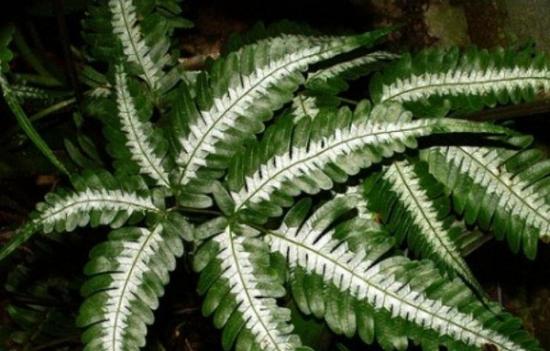
As mentioned above, Pteris Cretan and Pteris polynadras are the most popular types of ferns that are common in the modern world.Let's look at these two types in more detail.
Pteris Cretan
Homeland - Caucasus, Mediterranean, Middle East. It can be found mainly on river banks and rocks.
The length of its leaves can vary from 15 to 50 centimeters, and their width - from 10 to 20 centimeters. The leaves are pinnately dissected (the lower pair is dissected) and have 2-6 pairs of segments. The length of the straight petiole is up to 30 centimeters, and its coloring is straw yellow or light brown.
Pteris Cretan is represented in many varieties, which can differ significantly in leaf curl, growth rate, culture and other characteristics. For example, Albo-lineata is one of the popular varieties that has green stripes on the leaves, while the Gautieri variety has light green and unevenly feathery leaves. The Wimsettii variety is popular abroad; it has interesting patterns on all the upper leaves. This variety has found wide application in floristry.
Pteris cretanis is also the only species that grew in the territory of the former Soviet Union.
Pteris multicut
The fern is native to East Asia, which can be found again on river banks, as well as on rocks and in their cracks. Double pinnately dissected dark green leaves in the shape of wide triangles grow up to 40 centimeters in length and no more than 20 centimeters in width. The linear narrow segments are about 2 millimeters thick. The thin brown petiole of the plant reaches 25 centimeters.
Growing at home
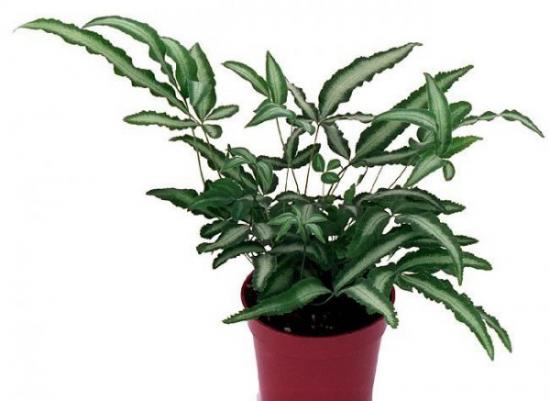
- Location. The best thing grow fern on the windowsill on the bright side of the house. However, the plant itself should not be exposed to direct sunlight. Optimal lighting is partial shade. If your plant's leaves are green, it is best to keep the room temperature around 12 degrees. For plants with variegated leaves, the temperature should be slightly higher - about 18 degrees.
- Landing. Without exception, all ferns are very demanding on the soil. It should contain a suspended content of coniferous soil; approximately equal amounts of leaf soil, sand and humus should be added to it. Pteris differs from other ferns in that the reaction of its soil mixture should be neutral.
- Care. In warm seasons, pteris needs to be watered abundantly, and in cold seasons - a little less often. The main thing is that the soil is not dry. From spring to autumn, the plant requires feeding. To do this, you can use low concentration flower fertilizers. It is necessary to ensure that dried leaves do not appear on the fern, and if they appear, immediate removal is required.
- Reproduction. in spring rhizomes of a plant separated and placed in different pots. Reproduction is also possible by spores, which form small plants during development. For effective growth, you need to watch out for drying leaves, as well as scale insects and aphids.
Beneficial features
In folk medicine, a decoction of any part of the fern is used from:
- chest pain
- urinary tract infections
- insecticide poisoning
- dysentery
- hemorrhoids
- furunculosis
- inflammation of the lymph nodes
Pteris – beautiful plant, which can be easily grown at home at high humidity and certain temperatures.Some varieties of this fern have found wide application in the decoration of bouquets, etc. And the beneficial properties of the plant will allow you not only to enjoy its appearance, but also to use it for the effective treatment and prevention of various diseases.
Video about growing ferns at home:
Interesting information about the vegetable garden

